Contact : +91-79045 61980 | Email: hydrofitengineers@gmail.com
Hydraulic Valve Manufacturer, Dealer and supplier in india
Hydraulic valves are a vital part of a hydraulic system and contain the flow and pressure within it. Hydrofit engineers is the best manufacturer and supplier in India, Chennai, TamilNadu, Maharashtra, UttarPradesh. These valves affect performance, efficiency and safety on any industrial vehicle or system in which they are used from industrial applications to mobile machinery and more.
What Are Hydraulic Valves?
Hydraulic valves are those components which used to control and direct the flow of fluid in a hydraulic system. They define the actions of actuators, cylinders, hydraulic-motors, and other system parts. Every valve is to be used as a flow regulator, system pressure satisfier, or direction controller. They are built in different designs depending on the application, compatibility with the medium, working pressure range, temperature exposure and desired reaction time. Such ranges of pressure (100 bar to over 700 bar) require hydraulic valve types and the performance levels are crucial for high-performance equipment.
Core Functions of Hydraulic Valves
The three main operating areas of the hydraulic valves are:
- Flow control: They adjust the speed of an actuator by setting the rate at which fluid enters and leaves it. They even provide energy efficiency and motion precision.
- Pressure Regulating: These valves are designed to control pressure within operational ranges, protect systems from over pressurization and provides pressure regulation downstream.
- Directional Control: These are valves that direct flow of hydraulic oil enabling actuators to operate in forward or reverse, allow holding of position or stopping travel.
All such functions are necessary for the proper functioning and safety of hydraulic systems.
Explore Our Hydraulic Valves Category and Major types
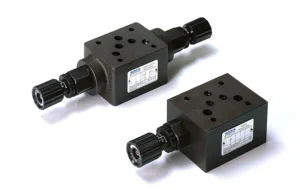
These valves are essential to moderate the speed of cylinders and motors. Equipment in automation systems, presses and hydraulic lifts.
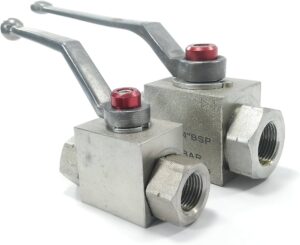
A valve for switch on / off, little pressure loss. Perfect for Pipe work isolation, maintenance Works and emergency shutdowns.

These valves regulate the flow direction of the hydraulic fluid like allowing actuators to move forward, reverse, hold position, or stop. They can be used to control the movement of hydraulic cylinders or motors.
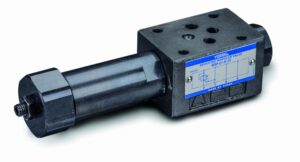
These valves regulate the pressure of the hydraulic fluid in the system. There are pressure relief, pressure reducing, counterbalance, unloading and sequence valves.
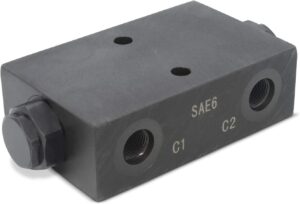
These valves prevent the reverse flow of hydraulic fluid. They are commonly used in hydraulic circuits to prevent damage to pumps and other components. Also called non return valve.
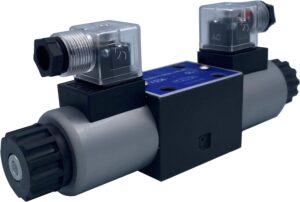
These valves are operated by an electric current and are often used in applications where remote control is required
There are more hydraulic valves are available like Servo Valve, sequence valve, proportional valve, shuttle valves. We also deal with Torque and yuken hydraulic valves.
These valves are used to regulate the flow rate or pressure of hydraulic fluid in proportion to an electrical or mechanical input signal. They are commonly used in applications where precise control of hydraulic performance is required.
These valves protect the hydraulic system from overpressure by relieving excess pressure. They are typically used in systems where pressure spikes can occur.
Servo Valve
These valves are high-precision proportional valves that are used to control the position or speed of hydraulic cylinders or motors. They are typically used in applications where precise motion control is required, such as in aerospace and industrial automation.
Sequence Valve
These valves control the order in which hydraulic actuators operate. They are commonly used in systems where multiple actuators need to be controlled in a specific sequence.
Shuttle Valves
These valves allow the flow of hydraulic fluid from two separate sources to be combined or diverted. They are often used in applications where redundancy is necessary.
How to Choose the Correct Hydraulic Valve
The choice of the appropriate valve is determined by a system’s performance specification. Below are core considerations:
- Flow Class (LPM/GPM) – Defines actuator speed and system response.
- Pressure – When the valve is sized, it shall be based on cracking pressure, maximum pressure and surge considerations.
- Application Environment – This covers temperature extremes, vibration, levels of contamination, humidity.
- Actuators Requirement – Different actuators require certain flow and directional control functions.
- Level of Automation – For automation, solenoid, proportional, or servo valves are required.
- Compatible Material – Based on type of fluid: mineral oil, synthetic-oil or water-base fluids.
- Port configuration – BSP, NPT, SAE or manifold pattern.
This selection framework ensures reliability, safety, and best performance of system .
Maintenance & Reliability Best Practices
As opposed to AN or NPT where the thread itself carries you over the break, hydraulic valves need a constant maintenance to steer clear of wear and prolonged life:
- Filter quality – Contamination is the number one reason for valve failure.
- Observe the condition of the seals and leakage feature.
- Examination of mounting torque and connections tightness.
- Keep the right oil viscosity for temperature conditions.
- Periodic testing of proper function for relief and direction valves.
Regular maintenance will prevent this fate and save the cost of downtime, prolonging your vehicles service life.
